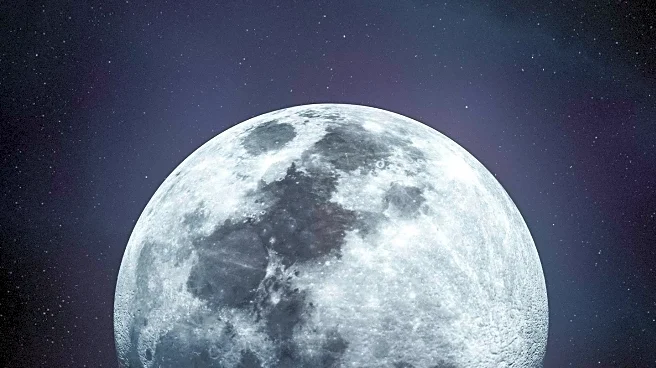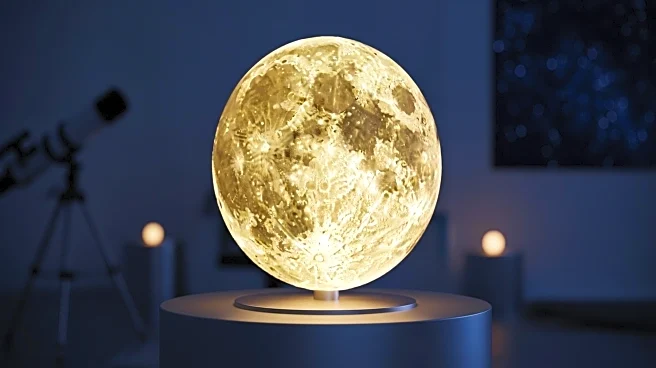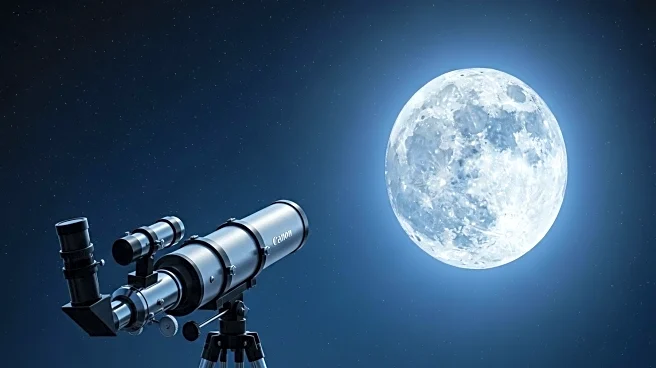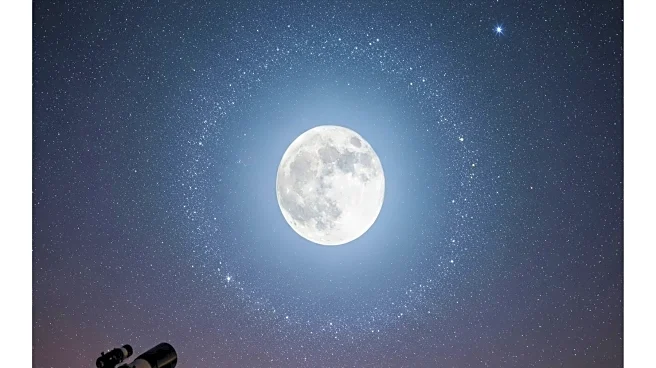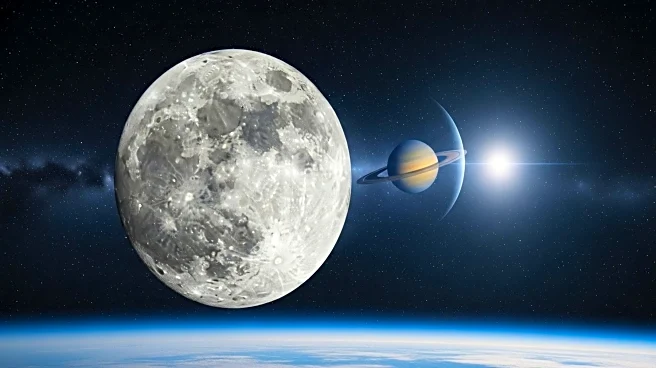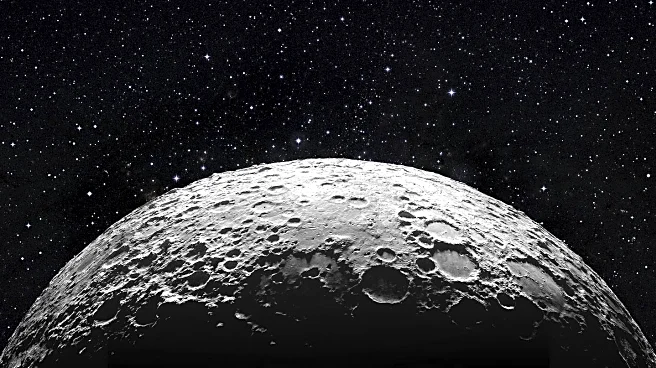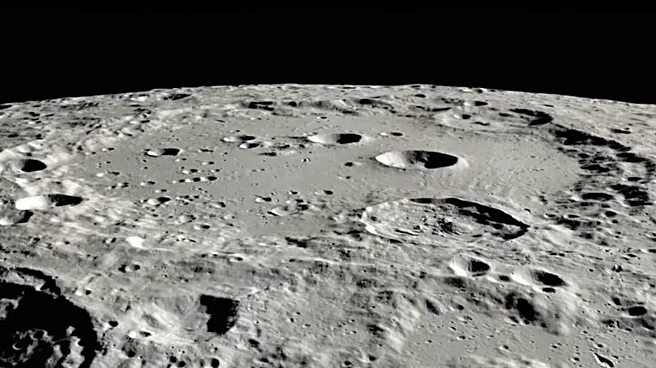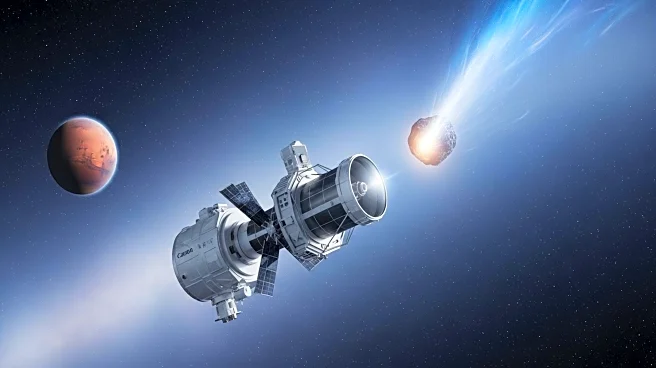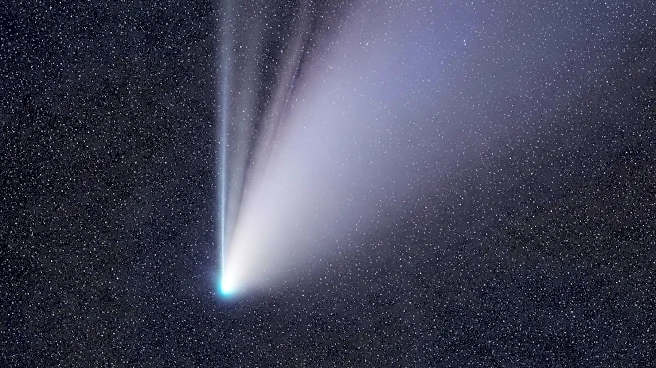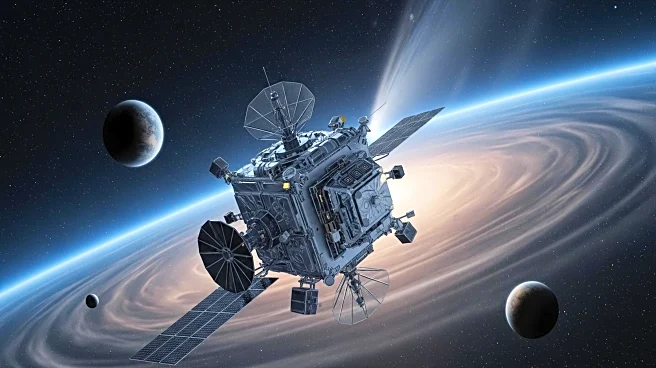What's Happening?
NASA, in collaboration with international partners, is hosting the International Observe the Moon Night on October 4, 2025. This annual event aims to engage the public in observing the moon and learning about humanity's efforts to explore Earth's natural satellite. The event features over 950 virtual and in-person activities worldwide, encouraging participants to observe the moon through telescopes, binoculars, or with the naked eye. Key lunar features to observe include the terminator, Mare Nubium, Montes Jura, and ejecta rays. The terminator, the line separating night from day on the lunar surface, will be visible on the left side of the moon, highlighting craters such as Pythagoras and Schickard. Mare Nubium, a basalt plain formed by ancient lava flows, will be visible south of the moon's equator. Montes Jura, a mountain range surrounding the Sinus Iridum impact site, will catch sunlight, creating a 'Golden Handle' effect. Ejecta rays, bright streaks from craters like Tycho, will be prominent during the full moon phase.
Why It's Important?
The International Observe the Moon Night serves as a significant educational opportunity, fostering public interest in space exploration and astronomy. By highlighting the moon's features and the science behind them, the event promotes awareness of ongoing lunar research and exploration efforts. This engagement is crucial for inspiring future generations to pursue careers in STEM fields, potentially contributing to advancements in space technology and exploration. Additionally, the event strengthens international collaboration in space science, as it involves partners from around the globe. Such collaboration is vital for pooling resources and expertise, which can accelerate scientific discoveries and technological innovations.
What's Next?
Following the International Observe the Moon Night, NASA and its partners may continue to host similar events to maintain public interest in lunar exploration. These events could include workshops, lectures, and interactive sessions to deepen understanding of lunar science. As lunar exploration progresses, new discoveries and missions may be announced, providing fresh content for future events. The public's growing interest in space exploration could lead to increased funding and support for lunar missions, potentially accelerating the timeline for returning humans to the moon. Additionally, educational institutions might incorporate lunar science into their curricula, further promoting STEM education.
Beyond the Headlines
The event highlights the cultural and historical significance of the moon, which has been a source of inspiration and wonder throughout human history. Observing the moon can evoke a sense of connection to past civilizations that studied the night sky. Furthermore, the event underscores the ethical considerations of space exploration, such as the preservation of lunar environments and the responsible use of space resources. As interest in lunar exploration grows, discussions around space policy and governance may become more prominent, addressing issues like space debris and international cooperation.

